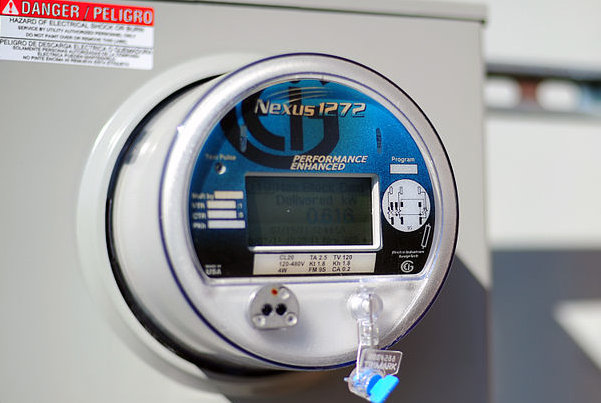Smart Grid Initiative Makes Us All Unwitting Guinea Pigs

If your state was installing a new technology that would impact virtually everyone, you might assume your state was acting based on the most complete and current science available to protect everyone’s health.
If your state was Vermont and it was intent on installing wireless smart grid technology in every home and business, you’d need to know that your state is acting based on very limited science, most of it more than 25 years out of date, with little concern for anyone’s health.
Making this a matter of growing public concern is the state-sanctioned installation of smart meters that expose people to radiation that has unknown consequences, but is suspected of causing a variety of physical ailments, from sleep disturbance and headaches to brain damage and cancer.
The United States allows greater exposure of its citizens to the hazards of wireless technology than any other country in the world and the U.S. Congress passed a law in 1996 that prohibits state or local governments from regulating wireless technology on the basis of health effects, Janet Newton of Marshfield VT explained at a public forum on April 25.
For more than 20 years, Ms Newton, has tried to persuade Congress and assorted federal agencies to expand and refine the health science of wireless technology, especially as it related to electromagnetic radiation (EMR). To further her work, Ms Newton founded the EMR Policy Institute, a scientific non-profit corporation dedicated to advancing sound public health polity. The Institute has engaged with state and federal agencies and legislatures, joined lawsuits, and held public forums, all with essentially the same message: you should know what you’re doing before you do it.
Electromagnetic radiation (EMR) is a natural phenomenon that includes light. EMR can be ionizing (such as X-rays, gamma rays, nuclear power, or nuclear weapons), and as such is a known cancer-causing agent. EMR can also be non-ionizing (such as cell phones, relay towers, power lines, chargers, or wireless electric meters), and as such is designated by the World Health Organization as a suspected cancer-causing agent.
The most recent research on the health effects of EMR dates from 1986 and serves as the basis for the Federal Communications Commission to regulate wireless technology. But this research deals with only one of EMR’s impacts, the thermal effect – overheating human cells and body, which is what your microwave does to food. And even that thermal research is limited, based only on a six-foot, 200-pound mature man, not smaller or older people, and not children or infants. What is the effect on them, short term or long term? The FCC doesn’t know, nobody knows.
A decade or so ago, when Ms Newton petitioned the FCC to expand and update the scientific basis for its regulations, the FCC responded that it was not a health agency and had no authority to improve its scientific data. When Ms Newton petitioned health agencies to intervene, they responded that it wasn’t their jurisdiction and only the FCC could set the health standards. When the case reached the Supreme Court, the court declined to consider it.
To bureaucrats, this sort of dead end is called a “regulatory void,” while others might call it a Catch-22. Either way, there’s no one to be held accountable, or the experiment with EMR on virtually the whole human population goes forward with little consideration of health effects.
Whatever one calls this uncertainty, there’s little inclination in government to resolve it, or even to develop reliable, current science. The 1986 science came from the Environmental Protection Agency (EPA) when it had a world class research program with 36 fulltime researchers. As funding was cut starting in the late 1980s, this program was eventually reduced to a single researcher, working part time.
Citing study after study from such entities as the California Public Utilities Commission, the Kaiser Foundation Research Institute, and the National Academies of Science, Ms Newton found them reaching the same conclusion again and again – that the scientific study of electromagnetic radiation (EMR) is entirely inadequate to assure even the likelihood of public safety in the proliferating environment of wireless technology.
Not only is there a better technology, Ms Newton argued, it’s even being pursued on a small scale in Vermont. That solution is fiber optic cable already in use by the Vermont Electric Co-op and planned as a statewide network by a partnership of IBM and the Vermont Electric Company. Fiber optic’s advantages include a much higher capacity, lower energy use, lower maintenance demands, much greater public benefit, and, arguably, an overall cost effectiveness.
But the federal government is driving the installation of wireless smart meters across the country, with billions of dollars in the stimulus act, from which Vermont is to receive $69 million. Although the EMR institute has briefed the staff of Vermont’s Senators and Congressman on the advantages of fiber optic and the uncertainties of wireless technology, these representatives have taken credit for the federal money without taking any initiative on the questions of public good.
One person at the forum on wireless electric meters on every house: “No one knows about it, and I’m just suspicious.”
The man next to him replied: “I live off the grid, so I don’t really have to make a decision.”
For most of the rest of us, unless one chooses to pay to not to have a wireless meter, someone else has already made the decision, based on outdated and incomplete information that may or may not be hazardous to your health.




